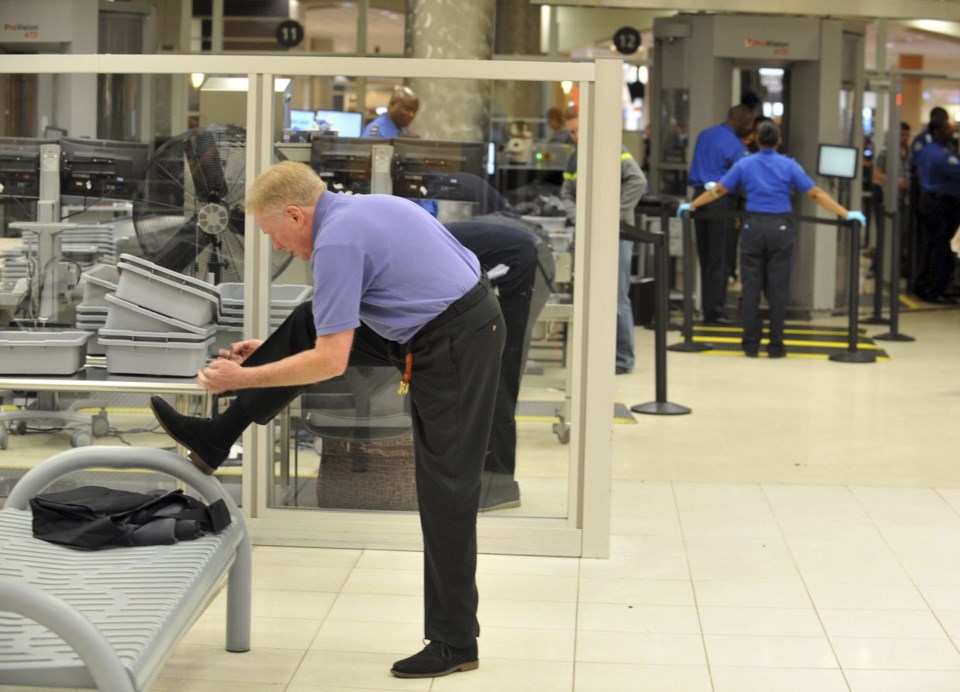Travelers racing to catch a flight at U.S. airports no longer are required to remove their shoes during security screenings, Homeland Security Secretary Kristi Noem said Tuesday.
Noem said the end of the ritual put in place almost 20 years ago was immediately effective nationwide. She said a pilot program showed the Transportation Security Administration had the equipment needed to keep airports and aircraft safe while allowing people to keep their shoes on.
“I think most Americans will be very excited to see they will be able to keep their shoes on, and it will be a much more streamlined process,” Noem said.
While shoe removal no longer is standard procedure at airport security checkpoints, some travelers still may be asked to take off their footwear “if we think additional layers of screening are necessary,” she added.
The travel newsletter Gate Access first reported that the TSA planned to make the security screening change soon.
Security screening sans shoes became a requirement in 2006, several years after “shoe bomber” Richard Reid’s failed attempt to take down a flight from Paris to Miami in late 2001.
All passengers between the ages of 12 and 75 were required to remove their shoes, which were scanned along with carry-on bags and other separated items such as outerwear.
Travelers previously were able to skirt the requirement if they participated in the TSA PreCheck program, which costs around $80 for five years. The program allows airline passengers to get through the screening process without taking off their shoes, belts or light jackets, and without having to take their laptops and bagged toiletries out.
PreCheck will remain the easier option for the time being since people going through regular screening stations still will have to put items besides shoes on a conveyor belt for scanning, Noem said.
TSA plans to review other rules and procedures to see how airport screenings can be simplified and expedited, she said. The agency is testing separate lanes for military personnel and families with young children, and expects to pilot other changes in the next six to eight months, Noem said.
In recent years, federal authorities have explored facial recognition technology and implemented Real ID requirements as a way to verify the identities of passengers.
The Transportation Security Administration began in 2001 when President George W. Bush signed legislation for its creation two months after the 9/11 attacks. TSA hired federal employees as agents to replace the workers for private companies that airlines had used to handle security.
Although regular air travelers are familiar with the intricacies of going through airport security, long lines during busy times and bags getting pulled aside for infractions such as forgotten water bottles can make the process fraught.
President Donald Trump's transportation secretary, Sean Duffy, asked the public in an April social media post what would make travel more seamless. The following day, Duffy posted on X that, “It’s clear that TSA is the #1 travel complaint. That falls under the Department of Homeland Security. I’ll discuss this with @Sec_Noem.”
Trump fired TSA Administrator David Pekoske in January in the middle of a second five-year term. Trump had appointed Pekoske during his first term in the White House, and President Joe Biden reappointed him.
No reason was given for Pekoske’s departure. The administrator position remains vacant, according to the TSA website.
___
Lisa Leff contributed from Sonoma, California.
Michelle Chapman, The Associated Press



